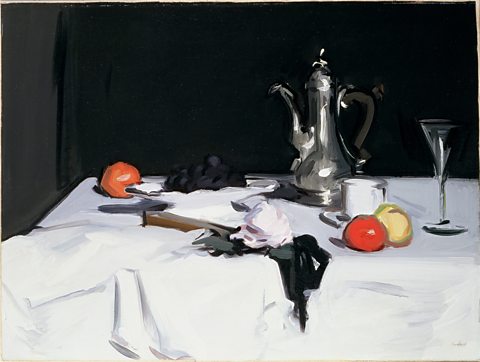The Rule of Thirds
The Rule of Thirds is a simplified version of the Golden Ratio.
The Rule of Third splits an image into thirds vertically and horizontally, as shown in this grid. Artists will often separate the foreground and background content by using the horizontal lines.
The overlapping areas indicated by the red circles are known as the focal points.
These can be used to draw the viewerâs attention to particular elements of a composition. When applying the Rule of Thirds, it is generally better not to fill all four of the focal points. It is usually better to emphasise only some them.

Samuel Peploe has composed Still Life With Coffee Pot (c. 1905) using the principles of the Rule of Thirds:
- the horizontal line of the table edge runs along the bottom third of the painting
- the reflected light down the centre of the teapot is on a vertical line two thirds of the way across the frame
- the bright orange and lemon to the left of frame sit at one of the focal points
As with the Golden Ratio, the Rule of Thirds is a compositional tool that can help to create an aesthetically balanced piece.